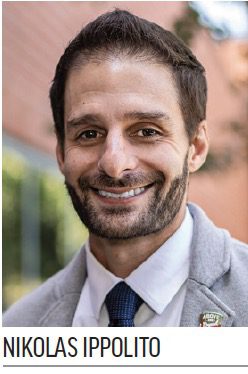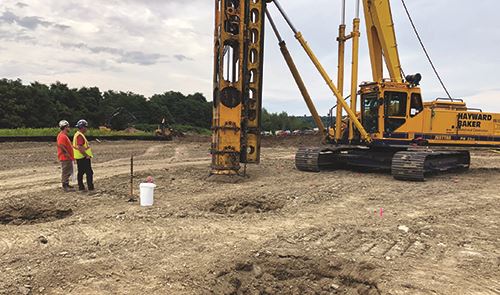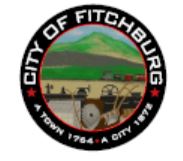Recognizing its airport’s potential as an economic magnet, the city of Fitchburg, MA, recently built a new runway capable of handling corporate jets. The $14.7 million project was backed and largely financed by the FAA. Fitchburg Municipal Airport (FIT) opened the new 5,001-foot runway in late May. It replaces a 30-year-old, 4,510-foot runway that had large cracks and was disintegrating in spots.
Recognizing its airport’s potential as an economic magnet, the city of Fitchburg, MA, recently built a new runway capable of handling corporate jets. The $14.7 million project was backed and largely financed by the FAA.
 Fitchburg Municipal Airport (FIT) opened the new 5,001-foot runway in late May. It replaces a 30-year-old, 4,510-foot runway that had large cracks and was disintegrating in spots.
Fitchburg Municipal Airport (FIT) opened the new 5,001-foot runway in late May. It replaces a 30-year-old, 4,510-foot runway that had large cracks and was disintegrating in spots.
Interim Airport Manager Peter Kettle notes that the new runway is 1 foot longer than the length required by most insurance companies that cover corporate aircraft. A long-time member of the city’s airport commission, Kettle was appointed as interim airport manager this past January.
Unlike many other small general aviation airports in northeast Massachusetts/southern New Hampshire, FIT will only be competing with three other airfields for corporate traffic: Nashau Airport in nearby New Hampshire MassPort’s Hanscom Field in Bedford and Worcester Regional Airport.
Although the airport is awaiting final FAA publication of its new instrument landing guidance, the freshly minted runway began attracting one or two business jets per week shortly after the new pavement was in place.
City leaders consider it especially important to invest in FIT as the population of nearby Boston continues to expand. “The mayor has big plans,” Kettle explains. “We have the land and old mill buildings that can be re-used. He sees the airport as an economic engine for the city.”
|
Project: Runway Reconstruction, Extension & Realignment Location: Fitchburg (MA) Municipal Airport Owner: City of Fitchburg Cost: $14.7 million Funding: 90% FAA; 5% commonwealth of MA; 5% local Construction: Sept. 2019-April 2020 Project Engineer: Gale Associates General Contractor: D.W. White Construction Geotechnical Consultant: GeoInsight Inc. Runway Reclamation: Murray Paving & Reclamation Runway Paving: P.J. Keating Taxiway Paving: Don Martin Corp. Utilities: KOBO Utility Construction Corp. Markings: Safety Markings Geotextile Fabric: TenCate Geosynthetics Americas Landscaping: M.O.N. Landscaping Key Benefits: Added length accommodates larger aircraft, helps airport attract more corporate jets Associated Project: Self-Service Fueling System Cost: $860,000
Funding: 80% commonwealth of MA; Key Benefits: 24/7 fuel availability for customers; decreased operating costs for airport |
Local leaders are banking on the airport’s “easy-access location” to help attract corporate jets. Fitchburg is an outlying suburb of Boston, with multiple state and interstate roads connecting it to downtown and the inner suburbs. In addition, there is a commuter rail station close to the airport.
Airfield Improvements
Creating the required safety zones for FIT’s new, longer main runway presented a challenge because the Nashua River borders the airport on three sides. Gale Associates, the airport’s engineer of record for the last 18 years, solved this issue by shifting the existing runway 1.5 degrees to gain the extra 500 feet that was needed.
Nikolas Ippolito, Gale’s project engineer, explains that strategy had two other key benefits: It eliminated the need for FIT to purchase additional land, and it reduced the number of obstructions that had to be removed because the elevation of one end of the new runway is about 6 feet higher.
During the project approval process, airport leaders secured FAA funding to build the new runway 100 feet wide, like the previous main runway, rather than 75 feet wide, the norm for Category B-II general aviation airports like FIT.
The Massachusetts Department of Environmental Protection requires airports to remove old pavement to offset the run off from new paved surfaces and to minimize the size of the required stormwater management system. Removing the west end of the 3,500-foot crosswind runway provided the needed offset; leaving the east end intact provides for future “offset” pavement, explains Ippolito.
General contractor D.W. White Construction began the project in September 2019 by removing the old main runway. “They did an incredible job,” Kettle comments. “One day we had a runway, and the next it was pulverized.”
The intersection of the two original runways was preserved, because aircraft continued to use the east-west crosswind runway through the fall and into April 2020.
After grading the site, crews began building the new runway with 30 inches of fill, followed by 6 inches of dense gravel and 4 inches of asphalt pavement. They worked from each end of the runway toward the middle, and finished paving last December. All that remained of the airport’s previous runway was the intersection of the two original runways.
Work resumed in early April with demolition of the old intersection and construction of the new center section. Crews completed FIT’s new main runway on May 23.
Eventually, the airport plans to build a revenue-generating solar farm where the west end of the crosswind runway used to be located. Preliminary ideas for the 31.6 acres on the remaining east end include commercial development and the construction of more aircraft hangars. In late September, the city was preparing to retain a consultant to update the airport’s masterplan.
The airport plans to link existing hangars to its new runway by reconstructing the ramp in 2024. FIT currently has five city-owned multi-plane hangars, three private multi-plane hangars, a single private hangar, 57 T-hangars and ramp space for 81 tie-downs.
Planning
The recent runway project was part of the airport’s latest master plan, which was adopted in 2008. Although FIT’s previous main runway could handle jets with wingspans up to 79 feet, many insurance companies would not cover that size aircraft operating on it.
The new runway can handle aircraft as heavy as a Gulfstream IV.
 According to Ippolito, the previous runway was 10 years past due for either reconstruction or repaving. However, the FAA was prioritizing the addition of runway safety areas at general aviation airfields throughout New England and elsewhere. At the shorter length, FIT’s previous runway met those standards.
According to Ippolito, the previous runway was 10 years past due for either reconstruction or repaving. However, the FAA was prioritizing the addition of runway safety areas at general aviation airfields throughout New England and elsewhere. At the shorter length, FIT’s previous runway met those standards.
Gale began planning the new runway in 2016, and work began in 2018 to remove obstructions in the new approach zones. For example, the roof of a nearby business extended into the northern landing approach, so the airport paid to modify the roof and create an easement.
The flight path for the previous main runway routed aircraft over an airport conservation area and did not encroach as deeply into the adjacent commercial area. The airport had to remove a few streetlights to accommodate the new flight path.

Underground Surprise
During a pre-construction geotechnical site evaluation, examiners discovered an abandoned dump along the north end of the new runway. “We knew there was some trash buried down at that end, but we did not know the extent,” says Ippolito, noting that the area is adjacent to a metal recycling firm that has operated there for decades.
The dump was not on any of the land records for the airport, which opened in 1929, he adds.
To be safe, the airport hired GeoInsight, a geotechnical consulting firm from Manchester, NH, to explore the site further and develop a plan. Since the site and materials in it (mainly garbage and leather tannery materials) were stable, the firm advised the airport to leave the dump in place.
Crews used a technique called rapid impact ground improvement to prepare the area where the dump was discovered. Ippolito explains that workers repeatedly dropped a 20-ton weight in a gird pattern to consolidate the waste materials. The site was then graded, capped with sand and topped with a geotextile fabric before runway construction began.
Kettle notes that airplane operations were only suspended for 40 days in the spring to accommodate construction, and helicopter traffic was never affected. Although the project benefited from an earlier-than-expected spring, rain delayed final paving for about two weeks.
Even though the spring work began at the height of the COVID-19 shutdown, the commonwealth of Massachusetts deemed the project essential and allowed construction to continue. Kettle reports that work was not interrupted by any coronavirus cases because crews wore masks and followed extensive sterilization procedures.

24/7 Fueling
Per its master plan, the airport also installed a new self-service fueling system. Funded primarily by the commonwealth, the $860,000 facility includes a new 6,000-gallon aboveground storage tank.
Now pilots can fuel their own aircraft without assistance, just like at a self-serve gas station. Previously, the airport had to dispatch a fuel truck, and an attendant would do the fueling.
Kettle explains that the new system allows FIT to deploy its labor force on other important jobs around the airport and saves the airport money on fuel truck maintenance. Moreover, it is expected to increase fuel sales by providing 24-hour availability.
While the airport is currently subsidized by the city, Kettle predicts that it could be self-supporting in the near future, thanks to increased traffic and higher fuel sales.




